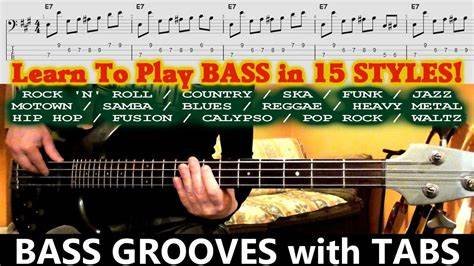The bass guitar is the heartbeat of music, providing rhythm and depth to any song. If you’re just starting, learning to play bass can seem intimidating, but with the right guidance, you’ll be grooving in no time. This guide covers essential tips and exercises for beginners to help you build a strong foundation as a bass player.

Understanding Your Bass Guitar
Before you start playing, familiarize yourself with the parts of your bass guitar. Key components include:
- Body: The main part of the guitar where the pickups and bridge are located.
- Neck: The long section where the frets and strings are.
- Strings: Usually four strings tuned to E, A, D, and G.
- Frets: Metal bars on the neck that divide notes.
Spend time holding the bass properly. Position the body against your torso and rest your thumb on the back of the neck for support.
Mastering Proper Technique
Finger Placement
Press the string firmly between the frets to produce clear notes. Avoid pressing directly on the fret wire, as this can create a buzzing sound.
Plucking Technique
Start with two fingers (index and middle) for plucking the strings. Use a smooth, alternating motion and aim for even pressure to create consistent sound.
Posture
Sit or stand in a comfortable position. Keep your wrist relaxed to avoid strain. Good posture will improve your playing and prevent injuries.
Learning Basic Notes and Scales
Open Strings
Begin by plucking each string individually to understand its sound:
- E (Lowest)
- A
- D
- G (Highest)
The Chromatic Scale
The chromatic scale is a great starting point for learning notes:
- Play each fret on one string, starting from the open string. For example, play E, F, F#, G, G#, and so on up the neck.
The Major Scale
Learn the major scale pattern to explore musical keys:
- Start on the open E string and follow this pattern: whole step, whole step, half step, whole step, whole step, whole step, half step.
Practice Simple Rhythms and Songs
Basic Rhythms
Focus on keeping time. Use a metronome to practice plucking in steady rhythms, such as quarter notes and eighth notes.
Easy Songs for Beginners
Start with simple bass lines from iconic songs, such as:
- “Seven Nation Army” by The White Stripes
- “Smoke on the Water” by Deep Purple
- “Another One Bites the Dust” by Queen
Playing along with songs will improve your rhythm and ear training.
Strengthening Your Fingers with Exercises
1-2-3-4 Exercise
- Place your fingers on the first four frets of the lowest string (E).
- Play each note in sequence, moving to the next string.
Spider Walk
- Play frets 1 and 3 on the E string with your index and ring fingers.
- Move to frets 2 and 4 on the A string with your middle and pinky fingers.
String Crossing
- Practice plucking one note on the E string, then skip to the D string, and repeat. This helps improve accuracy.
Developing Your Ear and Rhythm
Ear Training
Listen to bass lines in songs and try to replicate them by ear. Focus on recognizing patterns and intervals between notes.
Using a Drumbeat
Practice with a drumbeat or metronome to stay in sync with rhythm. As the bassist, your role is to lock in with the drummer’s beat.
Exploring Basic Groove and Dynamics
Simple Grooves
Play repetitive patterns using root notes, like E or A, to create grooves. Experiment with timing and note length to add personality.
Dynamics
Practice plucking softly and loudly to understand how dynamics change the feel of a song.
Building Confidence with Jam Sessions
Once you’re comfortable, join a local jam session or play along with backing tracks online. These opportunities help you apply what you’ve learned and build confidence in a collaborative setting.
Conclusion
Learning to play bass as a beginner is an exciting journey. By mastering proper technique, practicing regularly, and staying patient, you’ll develop the skills needed to create solid bass lines. With dedication and consistency, you’ll soon be laying down grooves that bring music to life. Grab your bass, start practicing, and enjoy the process of becoming a skilled bassist.







